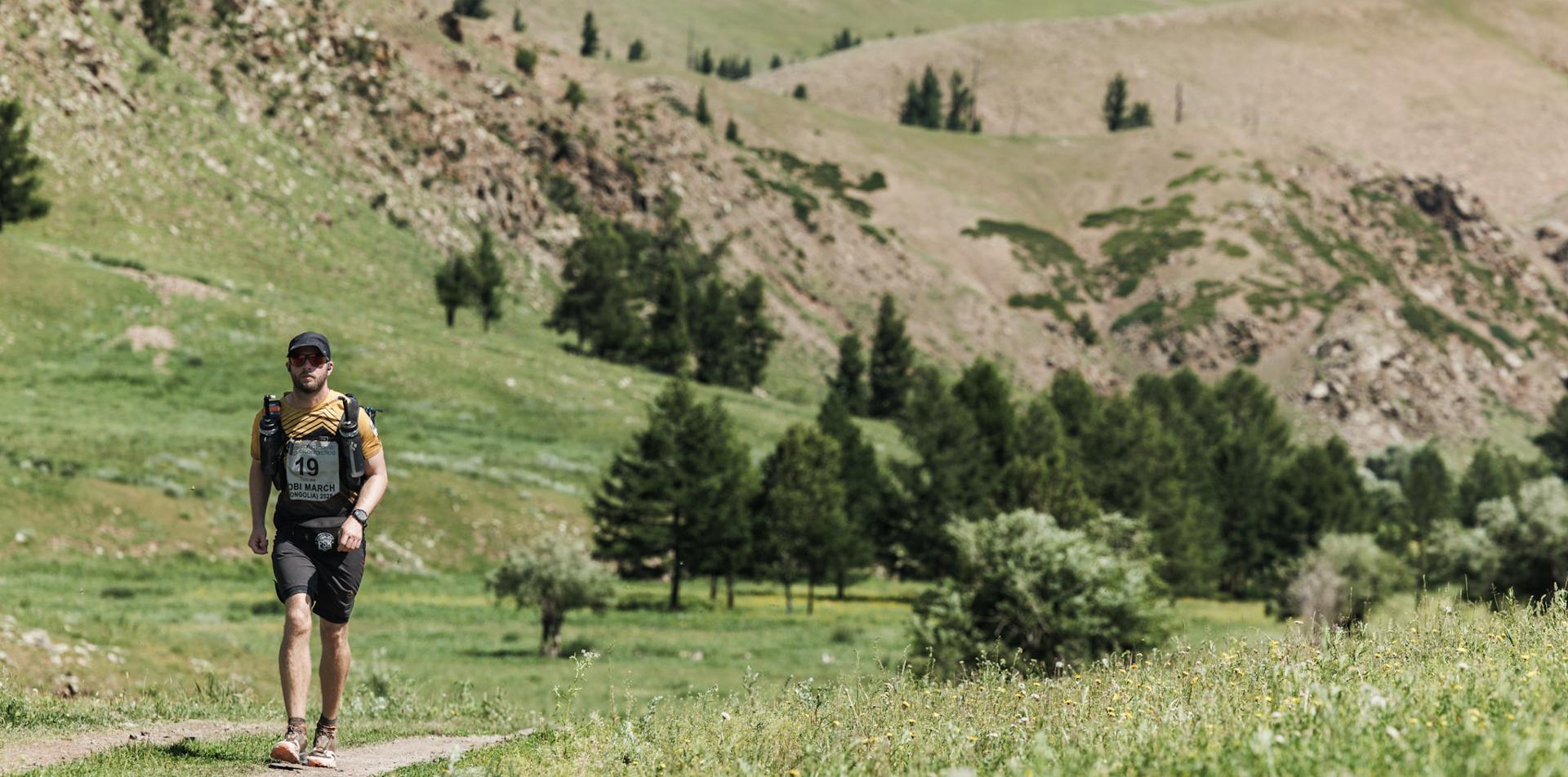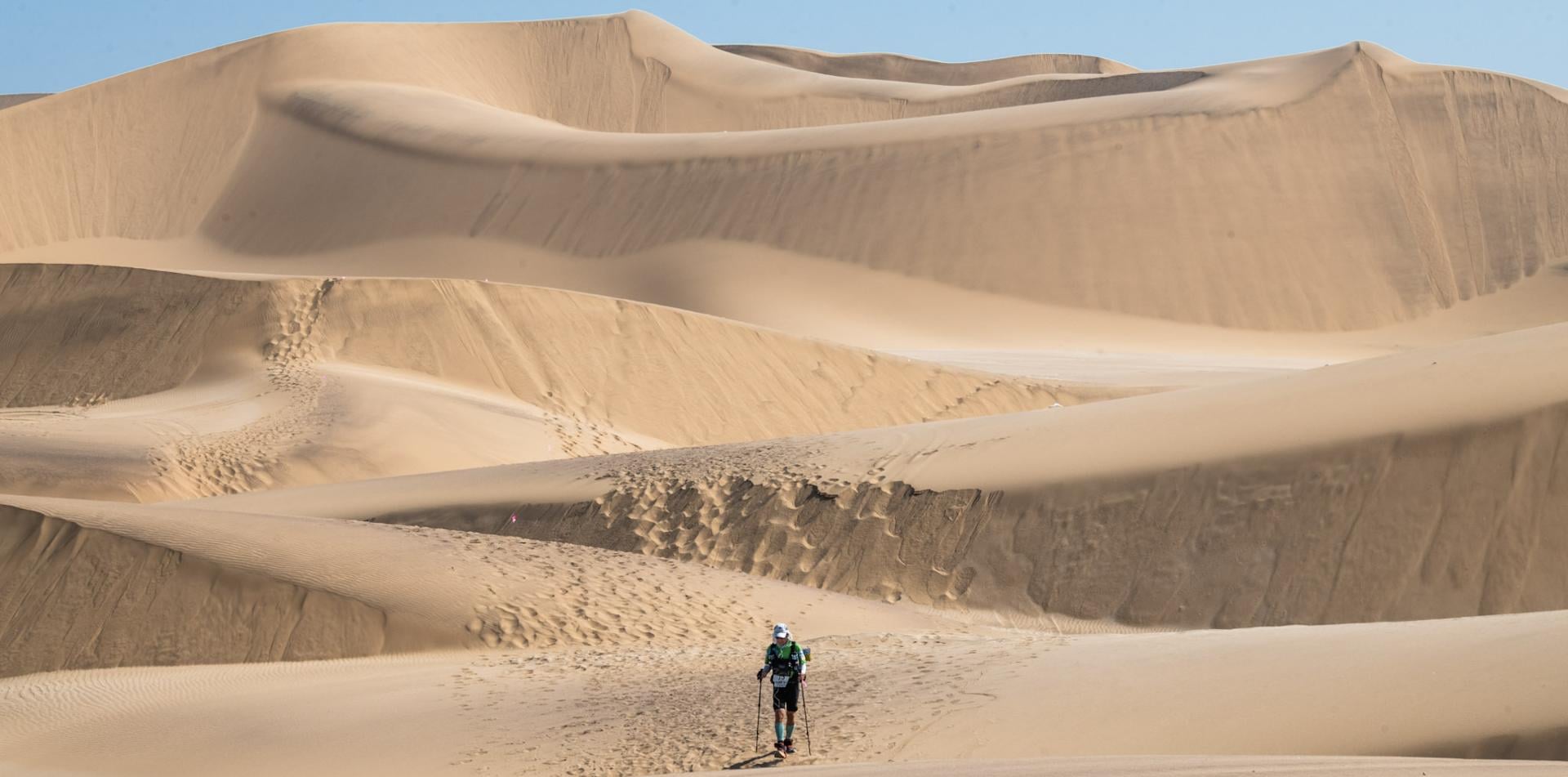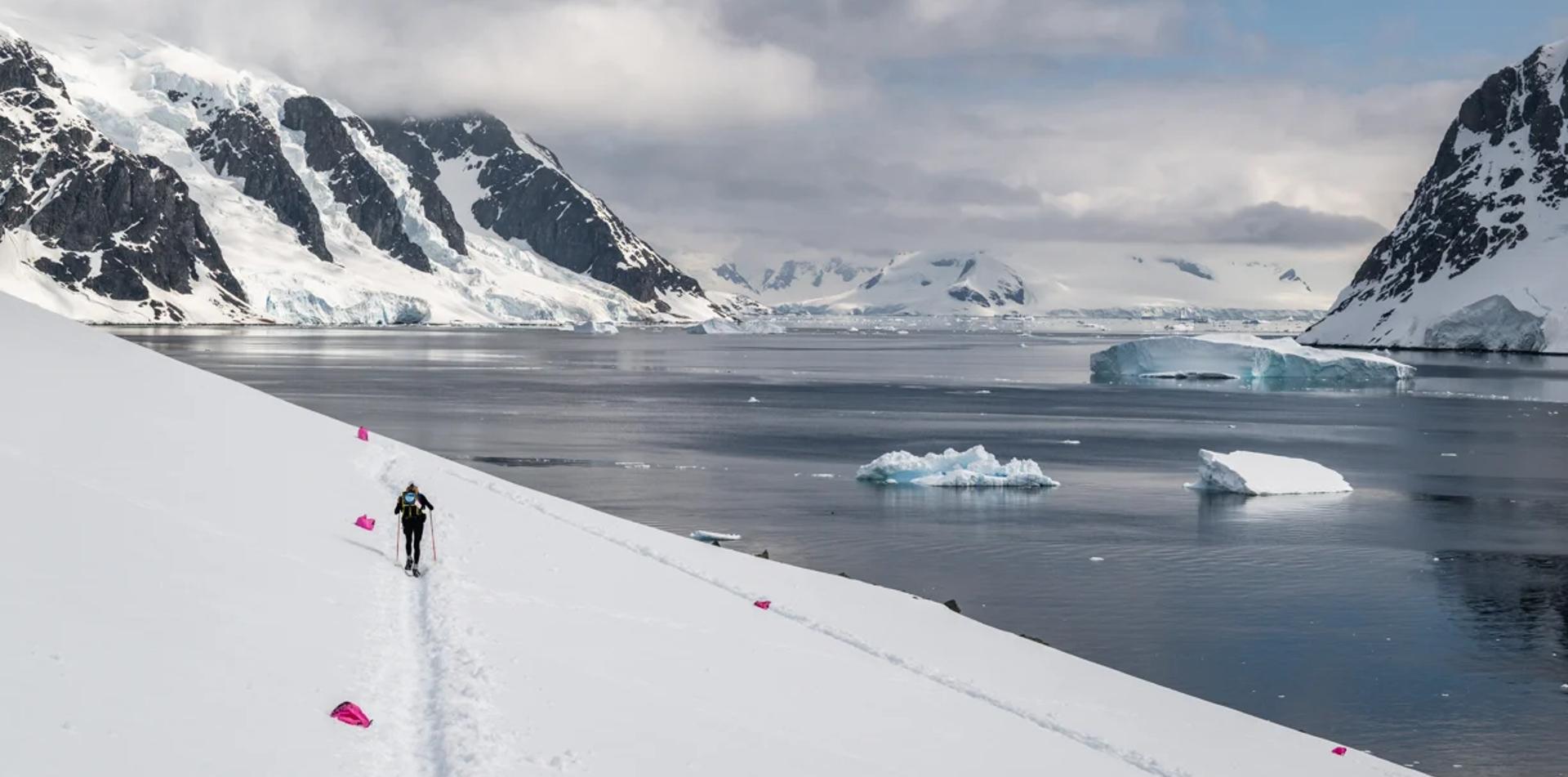John Vonhof Answers Competitors Questions About Feet
For preventative taping would you recommend paper tape or Elastikon, and why?
Paper tape is surprisingly strong and the one inch width is great for toes. Two inch paper tape can work for heels and balls of the foot, but offers little protection. Elastikon is a very sticky tape used by many athletes. Its outer surface is coarse and so it should not be used on toes. It also leaves a tape residue on the skin when removed. In my opinion, because of the outer coarseness, it tends to grab onto the sock, and does not slide like other tapes, and holds sand in the tape pores. This puts pressure and strain on the internal tissues of the foot, and often results in very sore and tender feet and even blisters under the tape. White athletic tape is discouraged because it does not stick well. Leukotape is very sticky and can be used effectively. Duct tape for multiday events is discouraged because it does not allow the skin to breathe – however it can be used in a pinch to get one to the day’s finish line. Remove it at the end of the day. My tape of choice is Kinesio-Tex, a breathable tape that stretches in its length and molds better than any tape to the curves of the foot. When applied correctly and with a tape adherent (Compound Tincture of Benzoin), it will stay on for days. With any tape, round corners, and pinch all folds and trim flat with a scissors.
What would you recommend to prevent blisters when you know your feet will get wet?
If possible, keeping your feet dry is the best choice. However that often is not possible with stream crossings, rain, sweat, and water poured over your head and running down your legs into your shoes. The use of good, high quality socks that wick moisture is a must. My recommendation is to use a product like Hydropel, which leaves a silicone coating on the skin, which repels moisture away from the skin. Whenever possible, dry your feet and allow them to breathe. Even short periods of exposure to air will give the skin a chance to recover and prevent maceration (pruning) of the skin. If the skin macerates, it must be dried and allowed to regain it former shape.
What are the pros and cons of Gore-Tex shoes in hot weather conditions?
Gore-Tex shoes are great for certain conditions. They breathe and are good at keeping moisture out of shoes. But in a race where you go through streams and get water inside the shoes, the water will have a hard time getting out of the shoes. Then your feet stay wet and maceration (pruning of the skin) sets in and the skin begins to deteriorate.
In the heat, shoes with Gore-Tex will breathe, however, conditions can cause moisture from your feet to build up as well as trapping heat in the shoes.
Once I have blisters what should I do to prevent them getting infected while racing for additional days?
A dab of antibiotic ointment on the blister, and inside if the skin is torn, is a good idea to help prevent infection. Zinc oxide can also be used, or even used in place of the ointment. The benefit of zinc oxide is it helps dry the skin if you can get it inside the blister, and thus will help them heal faster. The dry skin inside will be less painful. Of course, be alert to signs of infection: redness, pus, pain, the area warm or hot to the touch, and red streaks going up the foot and leg towards the heart. If you suspect infection, seek medical aid.
What are the top tips for preventing / dealing with blisters pre, during and after a race?
Pre-Race
1. Reduce your calluses. Baby soft skin is better than skin with hard calluses. Common callus areas are under toes, on the heels and on the bottom and side of the forefoot. Getting a blister under a callus can end your race. They are almost impossible to drain and because of that, can be very painful. Get a callus file and lotion to control the callus build-up. This can mean paying attention to these stubborn areas every day.
2. Learn how to patch blisters and tape your feet.
During the Race
1. Wear moisture wicking socks . If conditions will be sandy, avoid double-layer socks as the sand can build up between sock layers.
2. Carry (and know how to use) a small blister kit in a plastic Zip-Lock baggie with a needle, alcohol wipes, Compound Tincture of Benzoin swabs, tape wrapped around a straw, and your favorite lubricant in a small baggie.
After the Race
1. If racing the next day – air your feet, look for and treat any hot spots or blisters, and clean your shoes.
2. If the race is over – add a cup of Epson Salts to warm/hot water and soak your feet three to four times a day. The salts dry out the skin, helping the blisters heal faster.
What should I look for when selecting a shoe to prevent blisters?
The best thing you can do for your feet is to be properly fit for shoes. That means shoes that fit in length with space for your toes, and cups and hold your heels. They should have good height in the toebox so toes are not cramped. The insole should be high quality and provide support (most standard insoles are paper-thin and should be replaced). No rubbing on the Achillies tendon, not bothersome if you have bunions or Morton’s toes, and wide enough for your feet. In other words, they need to be personalized for your feet.
Some races suggest purchasing shoes 2+ sizes larger than your normal shoe size to allow for swelling. This can sometimes create blisters before your feet swell (or if they don't). How would you recommend preventing blisters when wearing larger shoes.
If you choose to wear larger than normal shoes in anticipation of feet that will swell, you have several choices to help them fit better. You can add a flat foam insole under the shoe’s regular insole/insert. Spenco make a flat insole or you can have one made by a pedorthist. This will raise your foot a bit higher and help fill the extra space of the larger shoe. You can also wear thicker socks or two socks. If you are prone to blisters on certain spots on your feet, pre-tape, even with the extra space in the shoes.
Why do some people get blisters no matter what they do and others never seem to get them at all?
Many athletes are simply prone to blisters. They seem to get them no matter what. Even though I say that, I believe these people can conquer their blisters. If this is you, you need to focus on what shoes and socks you have worn in the past, and what remedies you have tried. Then, make intentional changes.
- For toe blisters, try Injinji toe socks and make sure your nails are trimmed and smoothed, and your shoes have adequate toebox space.
- For heel blisters, change insoles and get fit for shoes.
- For ball of the foot blisters, try changing insoles.
On top of those ideas, try other socks. Try different lubricants like Hydropel or BodyGlide. Or try skipping lubricants as much as possible and switch to powders. And in all cases, try to reduce your calluses.
Then there are those who claim to have never had a blister. I tell them two things. First, someday, you will get blisters. Second, be prepared with knowledge of what to do to fix them when they finally come.
How about one last tip?
Even though this is last, it is very important. Wear gaiters. I am amazed at the large number of runners doing trail races who do not wear gaiters. These simple devices cover the top of your shoes and keep dirt, sand, pebbles, and other “trail junk” out of your shoes. A small rock or a bit of sand can rub wear holes in your sock and rub against your skin until a blister has formed. Because many of today’s shoes are made with mesh, the best gaiters for races where there will be sand, dust and dirt are those which cover the entire shoe. Get the ones offered by RacingThePlanet.com and attached them to your shoes before the race. Some runners make their own or buy other ones. Whatever your choice, make sure you use them.
Too many athletes forget to be intentional about getting their feet ready for competition. Whether it’s a footrace where you are in contention to win, or where you are a middle or back-of-the-pack runner, your feet deserve your best. Good luck.
John Vonhof
Author - Fixing Your Feet: Prevention and Treatment for Athletes, 6th edition, 2016







 Newsletter
Newsletter
 Online Store
Online Store






